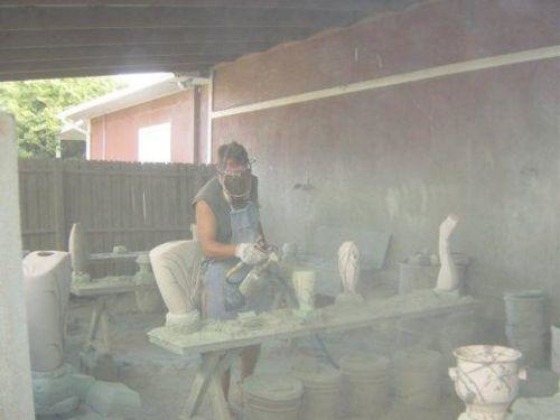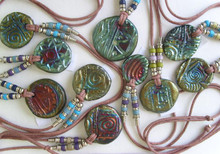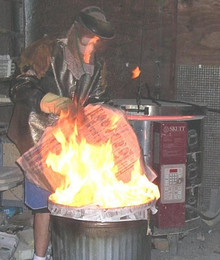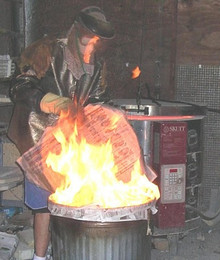 Loading... Please wait...
Loading... Please wait...- 8132402066
- Home
- My Account
- Gift Certificates
- View Cart
Categories
- Home
- Learn About My Raku Glaze
Learn About My Raku Glaze

Mr Turner,
"I have ordered your glaze and absolutely love it. I hand-build with Raku clay and get beautiful pieces every time!
It is by far the best raku glaze that I have tried. Thank you for sharing your glaze."
Amy Zander
The raku glaze I use was derived from the Piepenberg Glaze called "Alligator". Over the years I have adjusted this formula to what I use today. I have been working with it for about 18 years, but over the last several years I made the most significant changes and this glaze is now the best Copper Matte raku glaze I have ever seen. I have come to know and understand how it works. I spray this glaze most of the time (two coats), the first one kind of heavy and the second a little quicker. It can be poured or brushed. If the piece is kept out of the sunlight and in a consistent climate the colors will last for many years.
I get emails all the time asking about my Copper Matte raku glaze, so I have decided to put the letter I use to respond here for all to see.
I'll call it: Glad you asked. My raku glaze is amazing. I spray it on, but there are lots of people who brush it on, pour, or dip it, too. There are some tricks to brushing it on and I am happy to tell you all the tricks to using my raku glaze so that you get beautiful colors consistently. This raku glaze dries on contact so, if you are brushing, you need to wet your bisque piece by wiping it with a damp towel before you start brushing the glaze on.Use a big soft brush and try not to get a lot of drips. I would put on 2 or 3 good coats and depending on how heavy you glaze, you might want three good coats. You can clean up any drips and heavy areas by rubbing them with a tool or your finger and taking them down. This raku glaze does not move so if you have a big drip running down the piece you will see it when you have fired it, so take it off first. Experiment with it as everyone glazes a little different. You want a good solid coat, if you fire and see the glaze is too heavy, just back off a little for the next firing. You can re-fire the piece over and over to get the reduction timing down. Eventually it will crack, but your first pieces should be your experiments and learning pieces. You need to read the section in my website about the Magic of Raku. All the colors come from the reduction in the can. I use paper and line the sides and bottom of the can about 3 sheets deep. I set the piece standing up in the center of the can and let the flames work all around the piece before putting the lid on to choke out the flames. I let the piece stay in the can for one hour before removing it and using a brush to clean it up. If you feel something has too copper you can put it in a computer kiln and set it to go to 330F for 27 minutes to enhance the colors or can just re-fire it and it is like starting all over. If you refire the piece without adding any glaze you can pull it at the 1580F. If you see the glaze is too thin you can put more glaze in that area and re-fire. I suggest you glaze heavier rather than light.
Getting the real variety of colors comes from the temperature the piece goes into the can at for reduction. If it is cooler the colors will be lighter, if you go in hotter you will get darker colors, as you experiment you will learn the timing and get all kinds of colors with this one raku glaze. I fire the glaze to 1740F, and drop to 1580F to pull the first piece. I do not pull any piece if the temperature is below 1560F. Let the temperature build back up before you pull the next piece. Take your time pulling, do not rush. You can hold the piece out in the air to get lighter colors. Make sure you stand the piece up in the can and it does not fall over.
I use electric kilns to raku because raku needs to be fired in oxidation. If you use gas, never fire in reduction. In other words do not have a flame shooting out the top. Keep your oxygen mix high. Use a pyrometer to know the temperature in your kiln. Go slower at the end, do not just ramp it up to 1740F in 30 minutes, take your time. The glaze needs to mature. This is not a glaze you can look at and see it is ready. By the time you see it is ready it has over fired.
I am always here to answer any questions and tell you why this raku glaze does this or that as you learn from firing. Take your time and read my site information carefully. There is a lot of good stuff here and when you are ready I will be here to help.
Good luck,
William K. Turner







